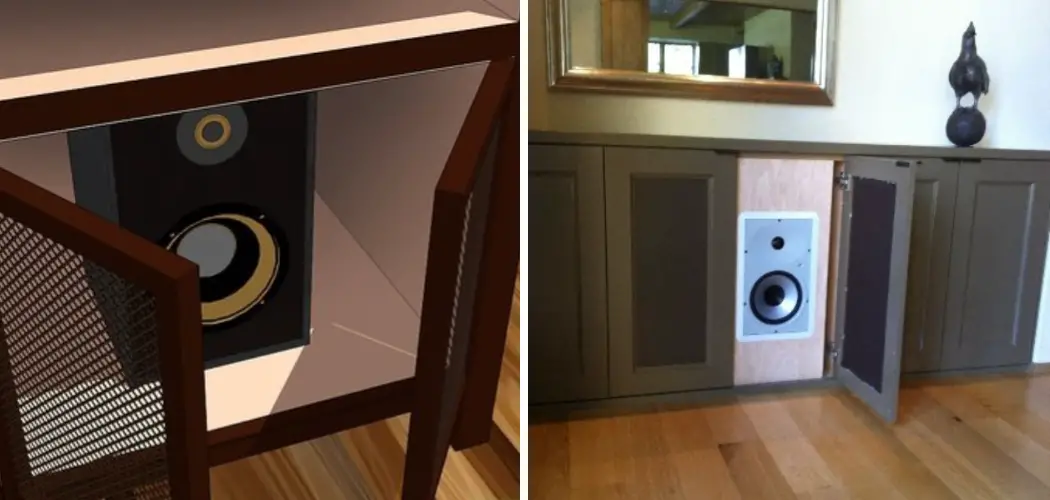Do you want to get the most out of your subwoofer without hurting the aesthetics of your living room? If so, there is no better place than a hidden corner. But how do you hide it well enough so it doesn’t draw attention and still looks nice in your decor? Don’t worry – with our guide, you’ll learn how to hide subwoofer in living room while still allowing for full sound performance!
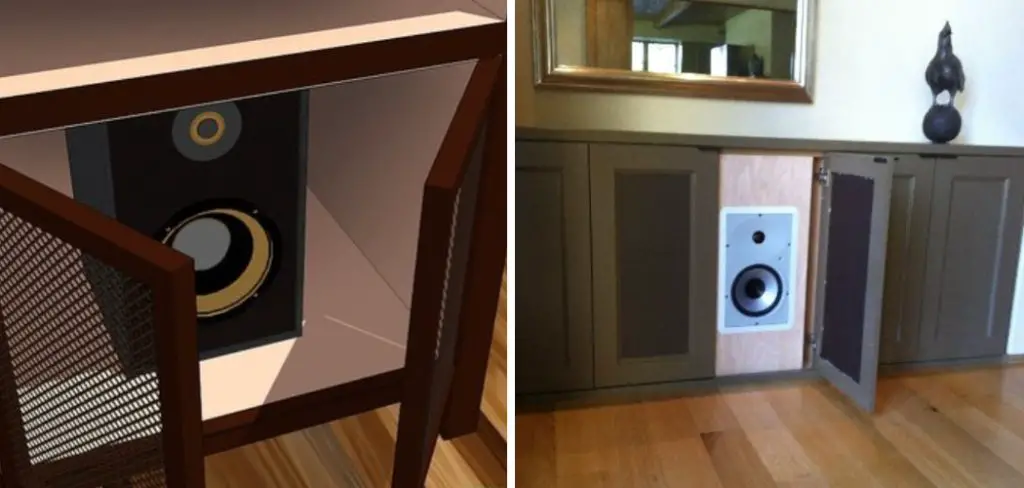
The subwoofer in the living room can be an eyesore, especially if you have a small space. However, with proper placement and creative thinking, you can effectively hide it without compromising sound quality.
Read on as we discuss why hiding a subwoofer can be beneficial, the necessary tools for installation, and various tips and tricks on where to hide one. Let’s dive in!
What Will You Need?
Before we get into the details of hiding your subwoofer, let’s talk about what you’ll need for installation:
- Subwoofer Box: Depending on the size of your living room and the type of subwoofer you have, choose a compact or low-profile design.
- Amplifier: This is the device that powers your subwoofer and helps produce those deep bass tones.
- Power Outlet: Make sure you have a power source nearby for plugging in your subwoofer and amplifier.
- Tools: Depending on where you hide your subwoofer, you’ll need basic tools like a drill, screws, and a hammer.
- Speaker Wire: This will be used to connect your subwoofer to the amplifier.
- Wireless Transmitter/Receiver: If you want a wireless setup, you’ll need these gadgets to transmit audio signals from your receiver or sound system to the subwoofer.
Now that you have gathered all the necessary tools, let’s discuss some tips and tricks for hiding your subwoofer.

8 Easy Steps on How to Hide Subwoofer in Living Room
Step 1: Identify Potential Locations
Begin with a quick survey of your living room. Look for areas where the subwoofer could fit without being too obvious. This might include corners, behind furniture, or even inside an appropriately sized cabinet. Remember to remember a few things while choosing the location: the proximity to a power outlet, the distance from the main sound system, and the impact on the sound quality.
Step 2: Test the Sound Quality
After identifying potential locations, it’s essential to test the sound quality of each location. Subwoofers are known to interact with the room’s acoustics, and placing them in various locations can affect the sound produced. For instance, placing the subwoofer in a corner might amplify the bass, whereas placing it behind furniture might muffle the sound. Experiment with different locations until you find a spot that offers the best balance between aesthetics and sound quality.
Step 3: Install the Subwoofer
Once you’ve found the ideal spot that perfectly balances aesthetics and sound quality, it’s time to install your subwoofer. If you’re hiding it behind furniture or in a cabinet, ensure it fits well and that there’s enough room for the sound to travel. When placing it in a corner, keep a distance from the walls to prevent vibrations. Connect the subwoofer to the amplifier using the speaker wire, or set up the wireless transmitter/receiver if you’re going for a wireless setup. Plug the subwoofer and amplifier into the power outlet and ensure everything works fine.
Step 4: Conceal the Subwoofer
Now, the task is to hide your subwoofer. If you have chosen a spot behind furniture, it’s already quite concealed. However, consider using a decorative throw or a plant to disguise the location further for additional coverage.
If placing the subwoofer in a corner, consider using a room divider or tall plant for concealment. Ensure the cabinet door allows sound penetration for those who chose a cabinet. Some choose to replace solid cabinet doors with lattice or perforated metal designs that permit sound flow. Regardless of the location, ensure your subwoofer is partially blocked or enclosed, as it could overheat or distort the sound.
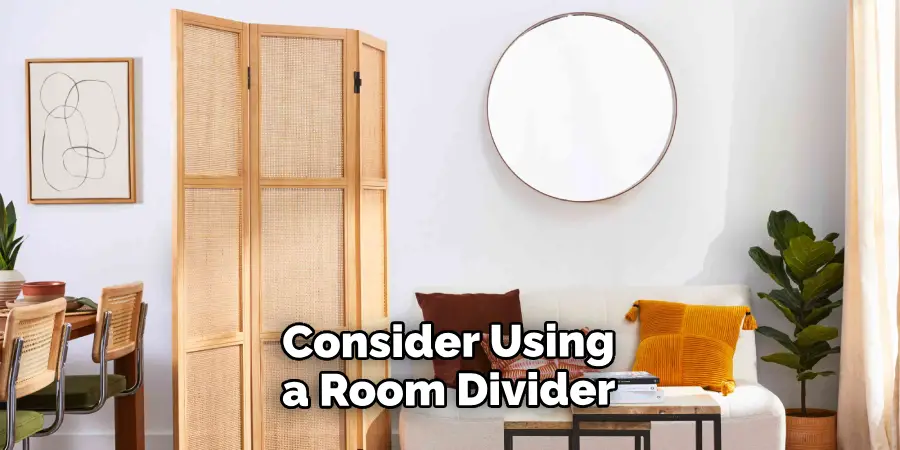
Step 5: Camouflage the Wires
Even after the subwoofer is well hidden, unsightly wires can give it away. Thus, managing and concealing the wires is crucial. Consider using cable concealers or raceways, available in various colors and can blend with your wall or floor. Alternatively, you can run the cables along the baseboard or under the carpet to keep them out of sight. If you’re using a cabinet, consider drilling a small hole in the back for the wires to pass through. Ensure your wires are neat and organized to avoid tripping hazards.
Step 6: Regularly Check the Sound Quality
After your subwoofer is successfully installed and hidden, it’s important to check the sound quality regularly. The position of the subwoofer can change over time due to factors like furniture rearrangement or decor additions. Play an array of music or audio pieces that fully use the subwoofer range. If it doesn’t sound right, you may need to adjust the placement or settings again. Remember, the goal is not only to hide the subwoofer but also to ensure optimal sound quality.
Step 7: Maintain Your Subwoofer
Regular maintenance of your subwoofer is also key. Ensure it is free of dust and debris, especially if hidden behind furniture or inside a cabinet. Use a soft, dry cloth for cleaning the exterior. Avoid using any liquid cleaners, as they might damage the subwoofer. It’s also important to occasionally check on your subwoofer during use to ensure it is not overheating. Keeping your subwoofer in good condition ensures the device’s longevity and maintains the quality of sound it produces.
Step 8: Adjust the Subwoofer Settings
Once you’ve determined that your subwoofer is well-hidden and producing satisfactory sound, remember to fine-tune the settings according to your preference. This includes adjusting the volume, crossover frequency, phase control, and other features available on your model. The goal is to achieve balance with your main speakers so that the bass doesn’t overpower the other frequencies. Remember, what sounds best to you might differ based on the type of audio you’re listening to, so it’s worth spending time experimenting with these settings.
Following these steps, you can successfully hide your subwoofer in your living room without compromising sound quality or aesthetics. Finding the perfect spot may take some trial and error, but the end result will be well worth it.
5 Additional Tips and Tricks
Tip 1: Use Wireless Subwoofers
Consider using a wireless subwoofer to reduce clutter and increase placement flexibility. This can help eliminate the need for long cables running across your room.
Tip 2: Use Furniture That Matches Your Subwoofer
If possible, use furniture matching your subwoofer’s color and style. This can help your equipment blend in with its surroundings, making it less noticeable.
Tip 3: Consider Room Acoustics
Room acoustics can significantly affect the performance of your subwoofer. Large, hard surfaces can cause sound reflection, while soft, plush surfaces can absorb sound. Try to strike a balance for optimal sound quality.
Tip 4: Use Soundproof Curtains or Panels
For those who want to keep their subwoofer in the open but still want to camouflage it, consider using soundproof curtains or panels. These can help hide the subwoofer while also improving your room’s acoustics.
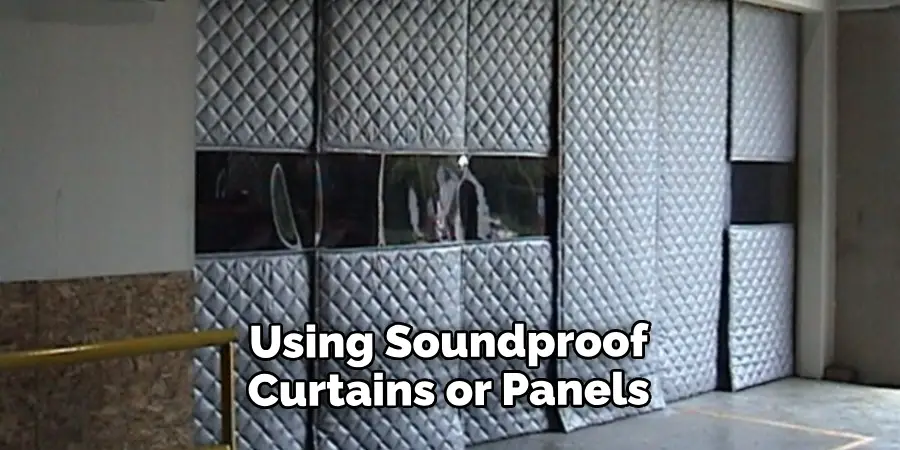
Tip 5: Be Creative
Finally, be creative with your subwoofer placement. Consider unconventional solutions like building a custom enclosure for your subwoofer or incorporating it into a piece of furniture. Your creativity can turn the challenge of hiding a subwoofer into an exciting design project.
With these additional tips and tricks, you can further enhance your subwoofer hiding techniques and achieve the ultimate balance between sound quality and aesthetics in your living room. So go ahead, hide that subwoofer with confidence!
5 Things You Should Avoid
1: Avoid Blocking the Subwoofer completely:
Never completely block your subwoofer behind a solid door or inside a fully enclosed space. This can lead to overheating or distorted sound. Always ensure there’s enough space for airflow and sound diffusion.
2: Avoid Excessive Wire Length:
Using excessively long wires to connect your subwoofer can lead to signal loss and degraded sound quality. Make sure to use the appropriate wire length for your setup.
3: Avoid Tripping Hazards:
Never leave subwoofer wires strewn across walkways or in places where they are likely to cause tripping hazards. Always use cable concealers or arrange them neatly along the baseboard.
4: Avoid Frequent Moving:
Avoid moving your subwoofer frequently. It’s best to find an optimal location where it can stay, as moving it can affect the sound quality and risk damaging the device.
5: Avoid Neglecting Regular Maintenance:
Don’t neglect regular maintenance of your subwoofer. Keeping it free of dust and debris ensures the device’s longevity and maintains the sound quality it produces.
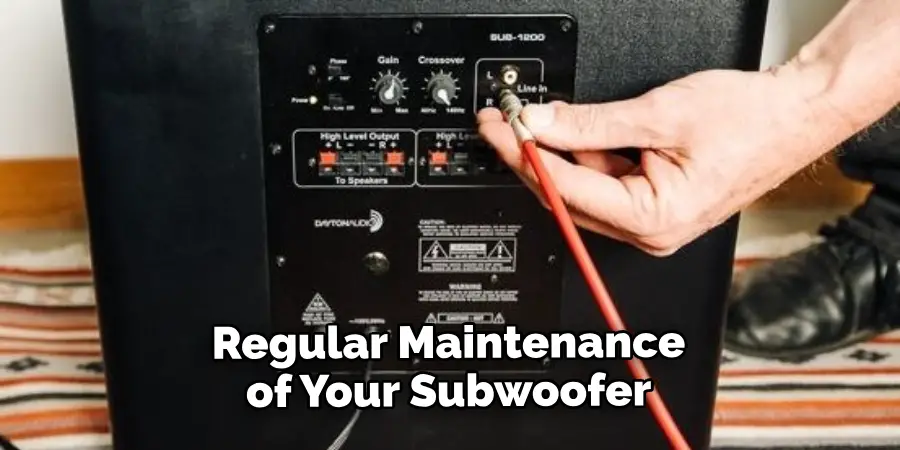
Avoiding these common mistakes can help ensure the best performance and longevity of your subwoofer while also maintaining a clutter-free living room.
Conclusion
It is possible to enhance your TV viewing experience greatly by investing in a quality subwoofer. It doesn’t always have to look out of place when it comes to hiding your subwoofer in the living room. With careful planning and research, you can create a seamless integration of your audio system without taking away the beauty of your living room interior.
Installing a floating shelf, camouflaging your subwoofer behind furniture or artwork, wrapping your subwoofer in art canvases, or simply placing it on its shelf can help you achieve that goal while allowing for maximum sound quality and performance.
Hopefully, the article on how to hide subwoofer in living room has given you some useful tips and tricks to create a clutter-free living room with optimal sound quality. So go ahead, get creative, and enjoy an enhanced audio experience in your living room!
About
Angela is the chief editor of Indoorense. She began her career as an interior designer before applying her strategic and creative passion to lifestyle and home.
She has close to 15 years of experience in creative writing and online content strategy for housekeeping and cleaning,home decorations as well as other efforts.
She loves her job and has the privilege of working with an extraordinary team. She lives with her husband, two sons, and daughter in Petersburg. When she’s not busy working she spent time with her family.

